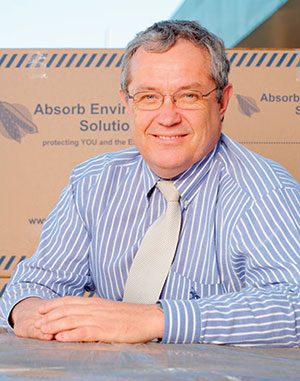Mine site environmental specialist Phil Abernethy takes a look at international and Commonwealth laws that can impact on mining activities.
ENVIRONMENTAL LEGISLATION BACKGROUND
Historically, Australian environmental issues were seen as the responsibility of the states and territories. However, the Commonwealth Government is increasing its environmental protection role, especially for internationally significant issues such as greenhouse gases and ozone depletion.
INTERNATIONAL ISSUES
The impact of humans on the environment extends beyond local, state and even national borders and has global repercussions. Indeed, it is suggested that some pollution issues are better resolved if a global perspective is adopted. International treaties, conventions, recommendations and protocols are some of the ways to try to reach agreement on this scale. International conventions and protocols have little influence on Australia unless the Commonwealth Parliament agrees to ratify these agreements. International protocols require matching Commonwealth Legislation to be enacted for these measures to have the force of law in Australia.
For example:
- The Montreal Protocol on Substances That Deplete the Ozone Layer (1987) was a landmark international agreement designed to protect the stratospheric ozone layer. It stipulated that the production and consumption of compounds that deplete ozone in the stratosphere ? chlorofluorocarbons, halons, carbon tetrachloride and methyl chloroform – were to be phased out. The developed economies phased out manufacture in 1995 and will phase out use by 2012. The developing economies will phase out manufacture by 2015. The “Hole in the Ozone Layer” is decreasing so these actions are working.
- The Kyoto Protocol was negotiated in December, 1997, at the city of Kyoto, Japan, and came into force in February, 2005, when finally, as set down in the Protocol, 55 countries, incorporating developed countries that accounted for at least 55 per cent of the total carbon dioxide emissions for 1990, signed on to the Protocol.
There is currently no international agreement on measures to deal with CO2 emissions or global warming. As the name suggests, global warming will require a global solution. At the moment, each country (including Australia) is making bold promises to reduce CO2 emissions at some time in the future. They all seem to be different reductions over different time scales. Watch this space!
COMMONWEALTH LEGISLATION
The Commonwealth Government generally administers Acts that have international significance and as Commonwealth Law applies throughout Australia, they are binding in each state and territory. Two Commonwealth Acts, in particular, that may have a direct impact on mining activities are: the Environment Protection and Biodiversity Conservation (EPBC) Act 1999, and the National Greenhouse and Energy Reporting Act 2007.
THE EPBC ACT
Although signed over 10 years ago, the most recent significant change to the environmental legislative framework in Australia was the introduction of the EPBC Act 1999, which came into force on 16 July 2000. It replaced five other Commonwealth statutes (covering areas such as whales, national parks, World Heritage properties, endangered species and environmental protection) and is administered by the Commonwealth Department of the Environment, Water, Heritage and the Arts (DEWHA). The Act provides a legal framework to protect and manage nationally and internationally important flora, fauna, ecological communities and heritage places defined in the Act as matters of national environmental significance.
According to the EPBC Act (DEWHA 2010b): “The Act affects any group or individual (including companies) whose actions may have a significant impact on a matter of national environmental significance”. This includes mining activities and proposals.
- Matters of national environmental significance include:
- World Heritage sites;
- National Heritage places; Wetlands of international importance (often called Ramsar after the Convention on Wetlands, signed in Ramsar, Iran, in 1971);
- Nationally threatened species and ecological communities;
- Migratory species;
- Commonwealth marine areas; and
- Nuclear actions including uranium mining.
Also included are actions that have a “significant environmental impact on Commonwealth land, or that are carried out by a Commonwealth agency (even if that significant impact is not on one of the seven matters of ‘national environmental significance’)” (DEWHA 2010b).
If you are intending any development, proposal, project or action that may trigger the EPBC Act under these areas, refer the matter to the Commonwealth. There are two key stages in the environmental assessment process required by the EPBC Act: referral and assessment (DEWHA 2010c).
It is important to realise that, although the approval rates are high, there are severe penalties for contravening the EPBC Act, with fines of up to $550,000 for an individual or $5.5 million for a company and possibly up to seven years in gaol for contravening the Act (values current as of December, 2008) (DEWHA 2010e). Repair or mitigation action may also be required.
WHY IS THE EPBC ACT IMPORTANT?
Clearly humans as a species have no right to knowingly cause the extinction of animal and plant species. We manage to do this without trying just by our mere existence.
The challenge for us in the mining industry is to extract oil and minerals while protecting ecosystems including plants and animals. A great example of this is the Gorgon Project on Barrow Island. Most of you are too young to remember Harry Butler as a television naturalist who was as popular as David Attenborough is now. Harry Butler was the original environmental officer on Barrow Island when Wapet, now Chevron, constructed the first land based oilfield in Australia in the 50s and 60s.
There was no environmental legislation in place then. However, Harry insisted that measures be put in place to protect the fragile ecosystem just because it was the right thing to do. The resulting co-existence of an operating oilfield inside a Class A nature reserve is an example that we can have it all.
This must be our aim on all mining operations. If we design simple and effective controls for our operations together with comprehensive rehabilitation when we have finished we can achieve these twin goals. In fact we have no choice – we must.
The downside of the EPBC Act is that it can be misused by some elements of the conservation movement to prevent all new and existing mining operations.
Unfortunately, this polarises opinions and prevents attempts to achieve the twin goals of protecting ecosystems and creating viable mining operations.
This legislation highlights the possibility of members of the general public mounting legal cases delaying or preventing mining activities. Two current cases are the Carmichael Coal mine in Queensland and the Liverpool Plains coal mining proposal. In my opinion, this is not the intention of the legislation. We must identify the middle path to achieve these seemingly incompatible objectives.
The next edition of Environmentally Mine will cover State and Territory Environmental Legislation, which has the greatest relevance to our day-to-day activities.
“The challenge for us in the mining industry is to extract oil and minerals while protecting ecosystems including plants and animals.”
PROFILE
Phil Abernethy is an environmental educator and consultant who developed Australia’s first Certificate IV in On-Site Environmental Management and Advanced Diploma of Environmental Management.
With a passion for the natural environment fostered from an early age, Phil is inspired to share his experiences and offer industry insight as part of his commitment to sharing environmental knowledge.
After graduating with a BE (Chem, Hons), MBA, and completing post-graduate studies in Environmental Impact Assessment, Phil had over three decades of experience in chemical engineering and providing environmental best practice commissioning and operating Sugar Mills.
Visit www.absorbenviro.com.au for more information on Phil and his work.















Add Comment